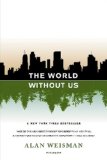Summary | Excerpt | Reviews | Beyond the Book | Readalikes | Genres & Themes | Author Bio

"Exfoliants: little granules that massage you as you
bathe." He selects a peach-colored tube of St. Ives Apricot Scrub; its label
reads, 100% natural exfoliants. "This stuff is okay. The granules are actually
chunks of ground-up jojoba seeds and walnut shells." Other natural brands use
grape seeds, apricot hulls, coarse sugar, or sea salt. "The rest of them," he
says, with a sweep of his hand, "have all gone to plastic."
On each, listed among the ingredients are "micro-fine
polyethylene granules," or "polyethylene micro-spheres," or "polyethylene
beads." Or just polyethylene.
"Can you believe it?" Richard Thompson demands of no one in
particular, loud enough that faces bent over microscopes rise to look at him.
"They're selling plastic meant to go right down the drain, into the sewers, into
the rivers, right into the ocean. Bite-size pieces of plastic to be swallowed by
little sea creatures."
Plastic bits are also increasingly used to scour paint from
boats and aircraft. Thompson shudders. "One wonders where plastic beads laden
with paint are disposed. It would be difficult to contain them on a windy day.
But even if they're contained, there's no filter in any sewage works for
material that small. It's inevitable. They end up in the environment."
He peers into Browne's microscope at a sample from Finland.
A lone green fiber, probably from a plant, lies across three bright blue threads
that probably aren't. He perches on the countertop, hooking his hiking boots
around a lab stool. "Think of it this way. Suppose all human activity ceased
tomorrow, and suddenly there's no one to produce plastic anymore. Just from
what's already present, given how we see it fragmenting, organisms will be
dealing with this stuff indefinitely. Thousands of years, possibly. Or more."
A
In one sense, plastics have been around for millions of
years. Plastics are polymers: simple molecular configurations of carbon and
hydrogen atoms that link together repeatedly to form chains. Spiders have been
spinning polymer fibers called silk since before the Carboniferous Age,
whereupon trees appeared and started making cellulose and lignin, also natural
polymers. Cotton and rubber are polymers, and we make the stuff ourselves, too,
in the form of collagen that comprises, among other things, our fingernails.
Another natural, moldable polymer that closely fits our
idea of plastics is the secretion from an Asian scale beetle that we know as
shellac. It was the search for an artificial shellac substitute that one day led
chemist Leo Baekeland to mix tarry carbolic acid—phenol—with formaldehyde in his
garage in Yonkers, New York. Until then, shellac was the only coating available
for electric wires and connections. The moldable result became Bakelite.
Baekeland became very wealthy, and the world became a very different place.
Chemists were soon busy cracking long hydrocarbon chain
molecules of crude petroleum into smaller ones, and mixing these fractionates to
see what variations on Baekeland's first man-made plastic they could produce.
Adding chlorine yielded a strong, hardy polymer unlike anything in nature, known
today as PVC. Blowing gas into another polymer as it formed created tough,
linked bubbles called polystyrene, often known by the brand name Styrofoam. And
the continual quest for an artificial silk led to nylon. Sheer nylon stockings
revolutionized the apparel industry, and helped to drive acceptance of plastic
as a defining achievement of modern life. The intercession of World War II,
which diverted most nylon and plastic to the war effort, only made people desire
them more.
After 1945, a torrent of products the world had never seen
roared into general consumption: acrylic textiles, Plexiglass, polyethylene
bottles, polypropylene containers, and "foam rubber" polyurethane toys. Most
world-changing of all was transparent packaging, including self-clinging wraps
of polyvinyl chloride and polyethylene, which let us see the foods wrapped
inside them and kept them preserved longer than ever before.
Copyright © 2007 by Alan Weisman. All rights reserved.






Your guide toexceptional books
BookBrowse seeks out and recommends the best in contemporary fiction and nonfiction—books that not only engage and entertain but also deepen our understanding of ourselves and the world around us.